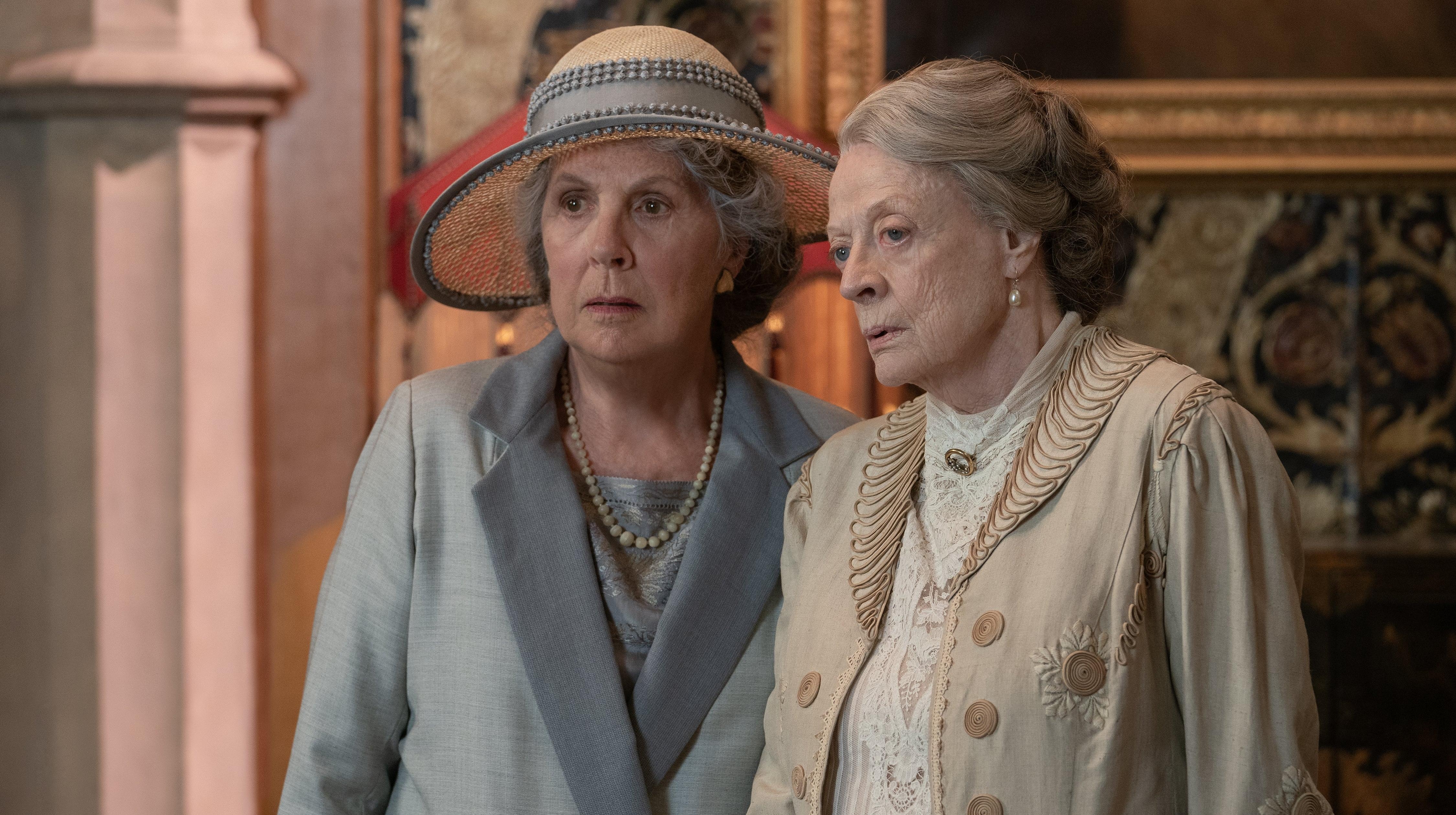Downton rekindles that old feeling in A New Era
Julian Fellowes' latest installment of the Downton Abbey saga delivers for Viewers Like You

Rejoice, Downtonians! Downton Abbey: A New Era is a worthy entry in Julian Fellowes’ beloved franchise. You were right to be concerned, of course. The acclaimed TV drama’s first foray onto the big screen, 2019’s Downton Abbey, felt like a glorified holiday special; it’s no surprise that Parasite, the far superior take on the same Upstairs, Downstairs premise, completely overshadowed it in terms of cultural significance. And the fact that Focus Features twice postponed A New Era, from December 2021 to March and then to May, wasn’t exactly reassuring. But the sequel manages to rekindle that old feeling right from the opening frames, set to the same John Lunn score that dependably sent chills through Viewers Like You many a Sunday, just the way Alabama 3’s “Woke Up This Morning” did to fans of The Sopranos—only this time Downton does so without Laura Linney’s intro.
Violet (Maggie Smith), the Dowager Countess, comes into possession of a villa in the south of France left by her old flame, the Marquis de Montmirail, whose widow (Nathalie Baye) vows to contest his will in court. Unexpectedly, the Montmirails invite the Crawleys to visit. For some reason, the ordinarily pasty Robert (Hugh Bonneville), Earl of Grantham, appears trim and tanned before even setting foot in France. As most of the Crawleys leave to uncover lurid details of the Dowager’s past affair, the Dowager herself and Lady Mary (Michelle Dockery) stay behind.
Whereas the previous film is nothing more than a superfluous comedy of manners brought about by a royal visit to the estate, the sequel finds Fellowes revisiting some of his series’ most enduring tropes. With the respective arrivals of electricity, telephone, toaster, fridge, mixer, radio, etc., the Downton crew has always greeted new technology with apprehension. The schtick of them struggling to adapt to modern conveniences that we take for granted never gets old, and Fellowes is up to his old tricks once more with a silent movie-era cast and crew having a go at making a sound picture at Downton.
You see, there are some leaks in the attic. To finance the house’s costly upkeep, the Crawleys reluctantly accept an offer from filmmaker Jack Barber (Hugh Dancy) to rent out parts of Downton for the photography of a “kinematograph” named The Gambler, starring Guy Dexter (Dominic West) and Myrna Dalgleish (Laura Haddock). Before cast and crew even have a chance to wear out their welcome, British Lion suspends production because talkies are in demand. Mary, enterprising as ever, encourages Jack to turn the doomed project into a sound picture, which taps into many hidden talents at Downton. It happens that Myrna has a hopeless cockney accent unsuitable for talkies, so Jack enlists Mary to dub over her lines. This sends Myrna into a diva fit which the maids, Anna (Joanne Froggatt) and Daisy (Sophie McShera), try to mediate. Former valet-butler-footman Molesley (Kevin Doyle), apparently a lover of dramatic arts, steps in under the wire to formulate dialogue from scratch.
It all gets a bit meta, which is jolly good fun indeed. Viewers may recall a PBS behind-the-scenes look at Highclere Castle, the real-life Downton, and how the show has enabled expensive renovations to the property. Also, it’s cute for the downstairs Downton staff to act all starstruck and giddy over the prospect of being extras in the movie-within-a-movie, when these series regulars are, to Downtonians at least, much bigger stars than West and Haddock, with all due respect.
As with many series, Downton is most emotionally resonant when beloved characters—memorably Dan Stevens’ Cousin Matthew and Jessica Brown Findlay’s Lady Sybil—suddenly depart. Over the years, the show variously teased the possibilities of Lady Mary and Anna heading for America (which no doubt inspired The Gilded Age), Daisy quitting to become a secretary, the butler Barrow (Robert James-Collier) finding love, the Dowager Countess permanently leaving, etc., but didn’t follow through with these ideas. Finally, 12 years after the series’ premier episode aired, there are a handful of high-profile departures in A New Era sure to hit Downtonians in the feels.
Unlike Michael Engler, who helmed the first Downton feature, director Simon Curtis has never worked on the show (though he’s tangentially connected to the franchise through his wife, Elizabeth McGovern, Cora the Countess of Grantham herself). Nevertheless, the look and feel of A New Era evoke its small-screen origins. There are periodic establishing shots showing the exterior of Downton in all its glory—an editorial choice that only makes sense for telly. But Downtonians will likely feel all too happy to visit this cast of characters again, and here Fellowes reminds us how we got so invested in their lives in the first place.